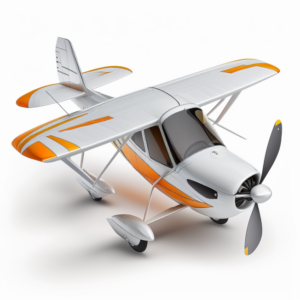The definition of “aircraft” is more than just technical jargon – it is the legal cornerstone of aviation law. This seemingly simple term determines how aviation laws are applied, how ownership is established, how liability is assessed, and how regulatory compliance is enforced across civil, commercial, and military operations.

✈️ The ICAO’s Broad Take on Aircraft
At the international level, the International Civil Aviation Organization (ICAO) provides a foundational definition:
> “An aircraft is any machine that can derive support in the atmosphere from the reactions of the air”.
This intentionally broad wording captures all manner of flying machines – from gliders and helicopters to commercial jets and drones. Most domestic laws around the world reflect this standard, creating a uniform regulatory language that simplifies international cooperation and compliance.

⚙️ Key Components of Legal Aircraft Definitions
Legal definitions often break down an aircraft into three major dimensions:
🔧 Physical Characteristics
- Fixed-wing vs. rotary-wing
- Jet vs. propeller engines
- Size, mass, and structural features
🛩 Operational Parameters
- Airworthiness certification
- Equipment standards (e.g., navigation, radio communication)
- Registration and licensing requirements
🚁 Versatility and Emerging Tech
- Covers manned and unmanned aircraft (UAS/drones)
- Anticipates eVTOL and experimental aviation vehicles
- Supports flexibility in classifying both current and future tech
📜 Legal Implications of Aircraft Definitions
Understanding what legally qualifies as an “aircraft” affects every part of aviation law, including:
✔️ Regulatory Oversight
A clear definition ensures that safety standards, maintenance protocols, and operational laws are uniformly applied.
⚖️ Liability & Responsibility
Definitions guide how fault is assigned in accidents or incidents. They determine what counts as an aircraft under liability insurance and tort claims.
🧾 Ownership and Registration
Aircraft as property are bought, sold, registered, and insured – and all these transactions hinge on a precise legal understanding of what an aircraft is.
📘 The Chicago Convention: International Consistency
The 1944 Chicago Convention on International Civil Aviation reiterates the ICAO’s inclusive definition. This agreement is central to the creation of global aviation standards and ensures that all signatory nations recognize and regulate “aircraft” under a common legal umbrella.
> 💬 Its impact reaches across borders – affecting registration, navigation rights, safety compliance, and liability protections.
🛡️ Impact on Insurance and Risk Management
Aviation insurance policies frequently use legal definitions of “aircraft” to determine what is covered. This usually includes:
- The aircraft structure
- Engines and propellers
- Attached instruments and communication gear
Comprehensive definitions protect aircraft owners and operators from gaps in coverage, especially in the event of equipment malfunction or physical damage.
🔍 Case Study: United States v. Causby (1946)
This pivotal case illustrates the real-world legal consequences of aircraft definition:
- Aircraft flying legally at low altitude disrupted a private property owner’s land use
- The U.S. Supreme Court recognized this as a potential nuisance, establishing boundaries between airspace use and property rights
> 🧠 The takeaway? How you define “aircraft” can determine whether your operations infringe on private rights – and whether you’ll end up in court.
🚀 Facing the Future: Adapting to Aviation Innovation
As new aviation technologies emerge, traditional legal definitions are being tested:
- eVTOL aircraft challenge weight, size, and airworthiness assumptions
- Drones blur the lines between aviation and data privacy law
- Autonomous flight systems raise novel questions about pilot responsibility and command
> ✈️ Policymakers must update legal frameworks to include new tech while ensuring safety, privacy, and liability systems remain effective.
📉 Anticipating Disputes in a Rapidly Changing Industry
The more diverse aircraft become, the more complex legal disputes will grow:
- Are hybrid air-ground vehicles legally “aircraft”?
- Who is liable when a drone disrupts commercial air traffic?
- How will ownership be managed in the era of shared or AI-controlled air taxis?
Answering these questions hinges on having a dynamic, inclusive, and tech-forward aircraft definition in aviation law.
